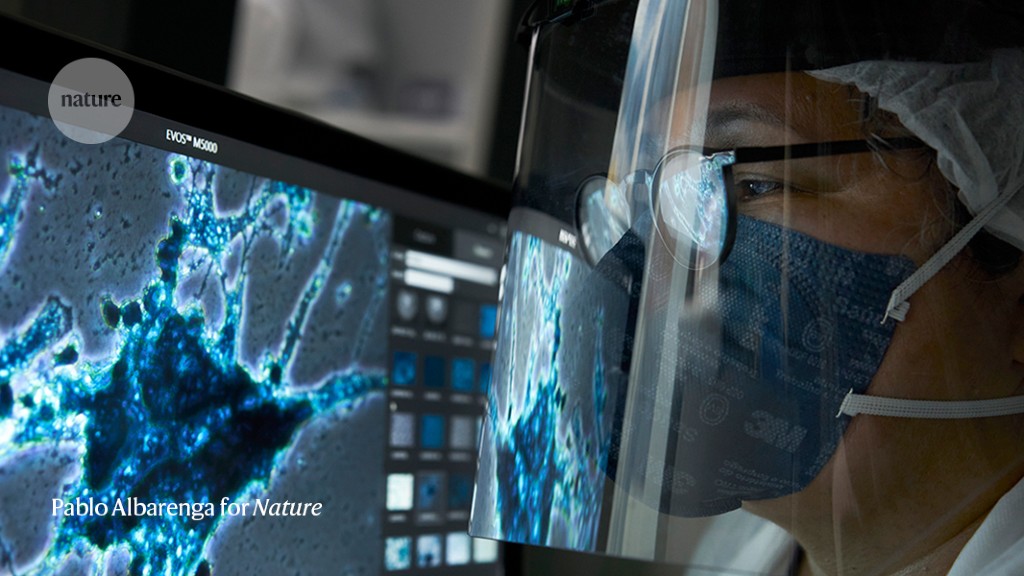In this picture, I’m looking into a digital microscope to observe the structural damage that SARS-CoV-2 does to cells from an African green monkey (Chlorocebus sabaeus). I’m inside NB3, the maximum-biosecurity laboratory here at the University of São Paulo (USP) in Brazil, wearing protective equipment. In this room, we look like astronauts.
Nowadays, we can watch molecular mutations as they occur, using computer software alongside advanced lab techniques. We can detect the viruses that cause respiratory disease in just 15 minutes.
I had dreamt of being a researcher since my adolescence. Like most people from Belém (the northern Brazilian city where I grew up), my family has an ethnically mixed background of Europeans and Indigenous people. I wanted to research the genetic impact of this, so for my undergraduate degree I studied genetics at the Federal University of Pará in Belém.
After that, I discovered I had to wait six months to apply to do a PhD in genetics at USP. But the microbiology programme was taking people, and I had useful experience in molecular biology from my first degree.
At USP, I met my husband, a virologist who also works at the university. To us, viruses are almost members of our family. When my daughter was younger, she used to say she knew some viruses better than her brothers.
Our lab works with seven hospitals in the Brazilian public-health system. We inspect samples, looking for 18 respiratory viruses, including the influenza virus H1N1 and SARS‑CoV-2; for viruses transmitted by insects, such as dengue, Zika and yellow fever; and for viruses, such as measles, mumps and rubella, that mainly cause disease in children.
This pandemic isn’t the first time my lab has worked on a public-health crisis. In 2019, we developed a test for the Zika virus. The kit, created in partnership with a private Brazilian company, is free for public hospitals.







More News
Author Correction: Stepwise activation of a metabotropic glutamate receptor – Nature
Changing rainforest to plantations shifts tropical food webs
Streamlined skull helps foxes take a nosedive